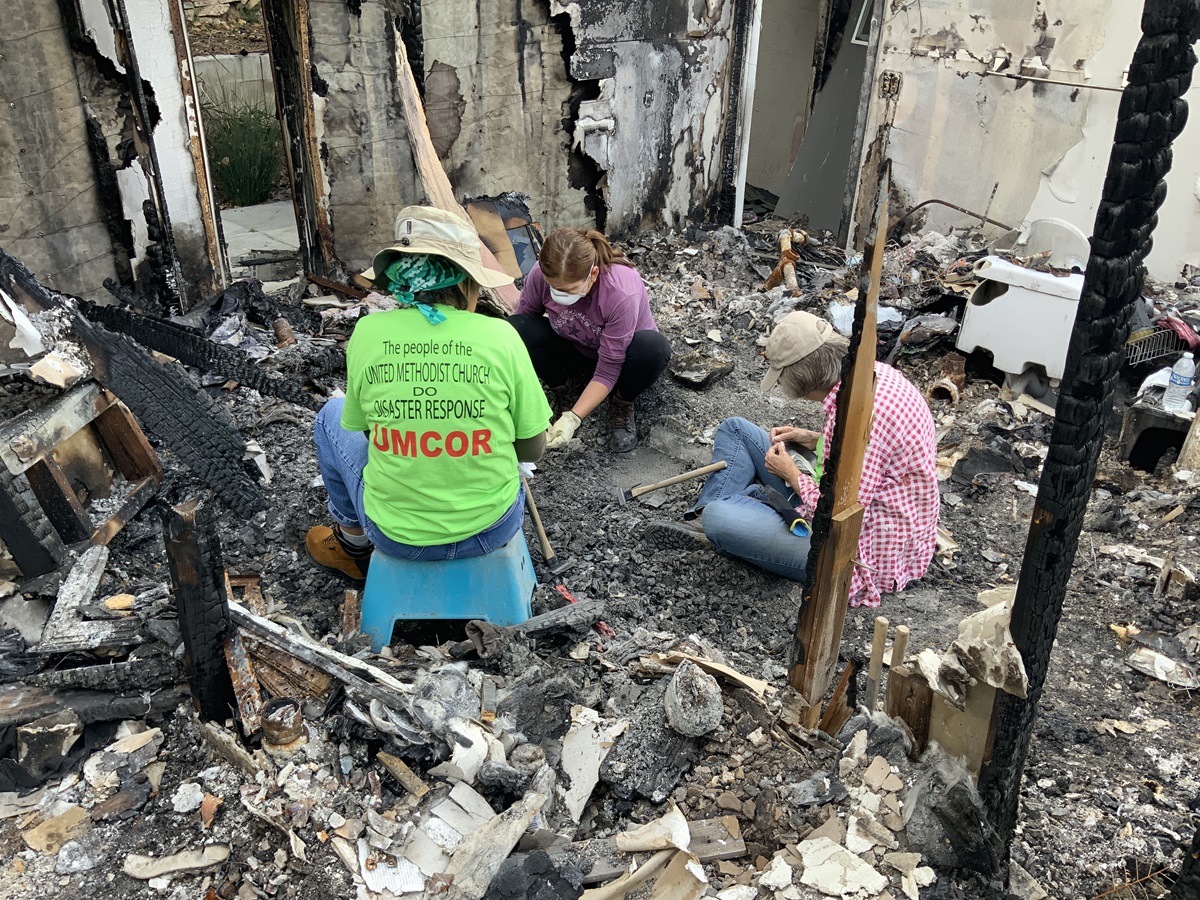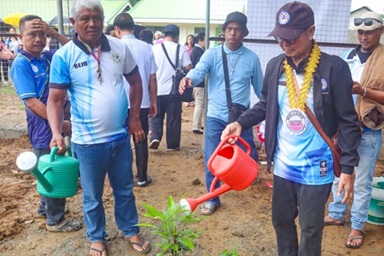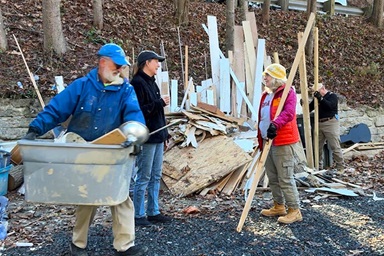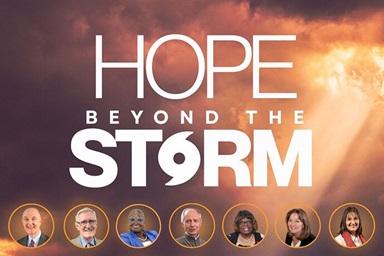Calm prevails as fire season approaches California, probably because it’s been unseasonably rainy this year, said a United Methodist clergyman who lost his house to fire in 2017.
“I don’t notice people being on edge so much,” said the Rev. Blake Busick, superintendent for the Great Northern District of the California-Nevada Conference. “We’re getting a lot of rain in May, which is unusual for us.”
Wildfire season, which in the past was mostly August and September, has crept into October in recent years.
“It will be dry up here in August and September,” said the Rev. Lindsey Bell-Kerr, pastor of First United Methodist Church and Christ Church United Methodist in Santa Rosa, California.
“Then, what puts everybody on edge is when there are high winds, the Diablo winds that we have out here. … Just the dryness in the air, you can feel when the conditions are ripe for wildfires.”
Already this year, more than 11,000 people have had to evacuate Alberta, Canada, because of wildfires on 700,000 acres of land, reported CNN. Smoke from these wildfires has caused haze and air quality issues in Montana, North Dakota, South Dakota, Washington state and Wyoming, reported The Associated Press.
The National Interagency Fire Center reported more than 1.8 million acres burned in California in 2018 because of 8,054 wildfires, according to the Palm Springs Desert Sun. That was the most wildfire damage among U.S. states and second in number of fires only to Texas, which had 10,541 wildfires that burned 569,811 acres.
How to help
The United Methodist Church continues to help with the slow rehabilitation of areas ravaged in the past. Little can be done in advance of this year’s fires because no one knows when or where fires will strike.
But people still have to try to prepare, Bell-Kerr said.
“We’re working for the transformation of the world, like everyone else,” Bell-Kerr said. “The aspirational and impossibility of our call is right in our mission statement.”
Here are some precautions churches might consider in anticipation of wildfires.
“I would recommend for every congregation to keep their rolls up to date,” Bell-Kerr said. “When we had the wildfires here, we served as an evacuation center for 100-plus folks, served meals every day and we went through our church directory and tried to check on all of our people.”
People most at risk during natural disasters include elderly and disabled people who need help to leave their homes, she said.
Some sort of communication system to reach the homeless should be set up if possible, Bell-Kerr said.
“Often homeless people are left out of public safety plans,” she said.
“We use a text-alert system to try to stay in touch with them in the event of an emergency,” she said. “They might not be connected to other communication, so we like to let them know where’s a safe space to go and if they need to evacuate town, how we’re going to connect them with a ride.”
Anyone who might find themselves in the path of a wildfire should be sure to make a to-go kit with important documents, said Judy Lewis, disaster response coordinator for the California-Pacific Conference.
“We handed out a documents sheet that said ‘Here’s all the places you’ll need to contact — the DMV, your home insurance, your health insurance, all these things,” she said. “You need to have all these documents, and you also need them saved to the iCloud or someplace else where they’re accessible.”
Keeping water and blankets in vehicles at all times is also a good idea, Lewis said.
Busick took a drive through communities damaged by wildfires recently, and said the rebuilding is just now starting in some areas.
“Where the Camp Fire happened in Paradise, there’s lots of cleanup to go on before they’re going to be doing much there,” he said. “They’ve got some water issues that are really holding them back from moving forward.”
Busick, who lost his home in 2017 to a fire when he was pastor of First United Methodist Church of Santa Rosa, became a superintendent on July 1, 2018.
“I’ve had to deal with the fires up at Paradise,” Busick said. “The church is still standing, but most of the members lost their homes.”
Busick said many former Paradise United Methodists have connected with other churches near their new homes and may never return.
“We’re trying to sort out what the future might be of our church there, in terms of a congregation worshipping there,” Busick said.
The need is so great that United Methodists often have to settle for small victories, said the Rev. Sandy Liddell, pastor of Malibu United Methodist Church. “We can’t help people rebuild their (Malibu) houses because that’s hundreds of thousands of dollars,” she said.
One young pizza deliveryman — not an owner of an expensive house — lost his home because of wildfires, and then his car broke down.
“So we were able to help repair his car so he could get back to it,” Liddell said. “We’ve been able to do those kinds of things, help people with things they need right now.”
Recovery from the Lilac Fire, which destroyed more than 4,100 acres in northern San Diego County in December 2017, has involved installing many ramps to mobile homes, Lewis said.
After land is leveled following wildfires, many mobile homes are inaccessible, Lewis said. Cheaper wood ramps aren’t allowed because they’re a fire hazard so plastic ramps that cost $3,000 each are used.
“We became ramp-installing teams,” Lewis said. “Our teams put them in place in concrete.”
Elsewhere, landscaping is needed, Lewis said.
“We have to change shrubs and grass to something that’s non-flammable, or less flammable anyway,” she said. “It’s landscaping to make them fire retardant.”
It’s been argued that wildfires have long been a natural part of the landscape, and that is true, Bell-Kerr said.
“The difference is that now they’re bigger, and wildfire season is longer,” she said. “We’re kind of on the brink of disaster, and that’s an opportunity to really live as a witness to Christ at this moment. The only response we have as Christians in this time of increasing disaster is in an increased commitment to the work of compassion and justice.”
Patterson is a United Methodist News Service reporter in Nashville, Tennessee. Contact him at 615-742-5470 or newsdesk@umcom.org. To read more United Methodist news, subscribe to the free Daily or Weekly Digests.
Like what you're reading? Support the ministry of UM News! Your support ensures the latest denominational news, dynamic stories and informative articles will continue to connect our global community. Make a tax-deductible donation at ResourceUMC.org/GiveUMCom.




